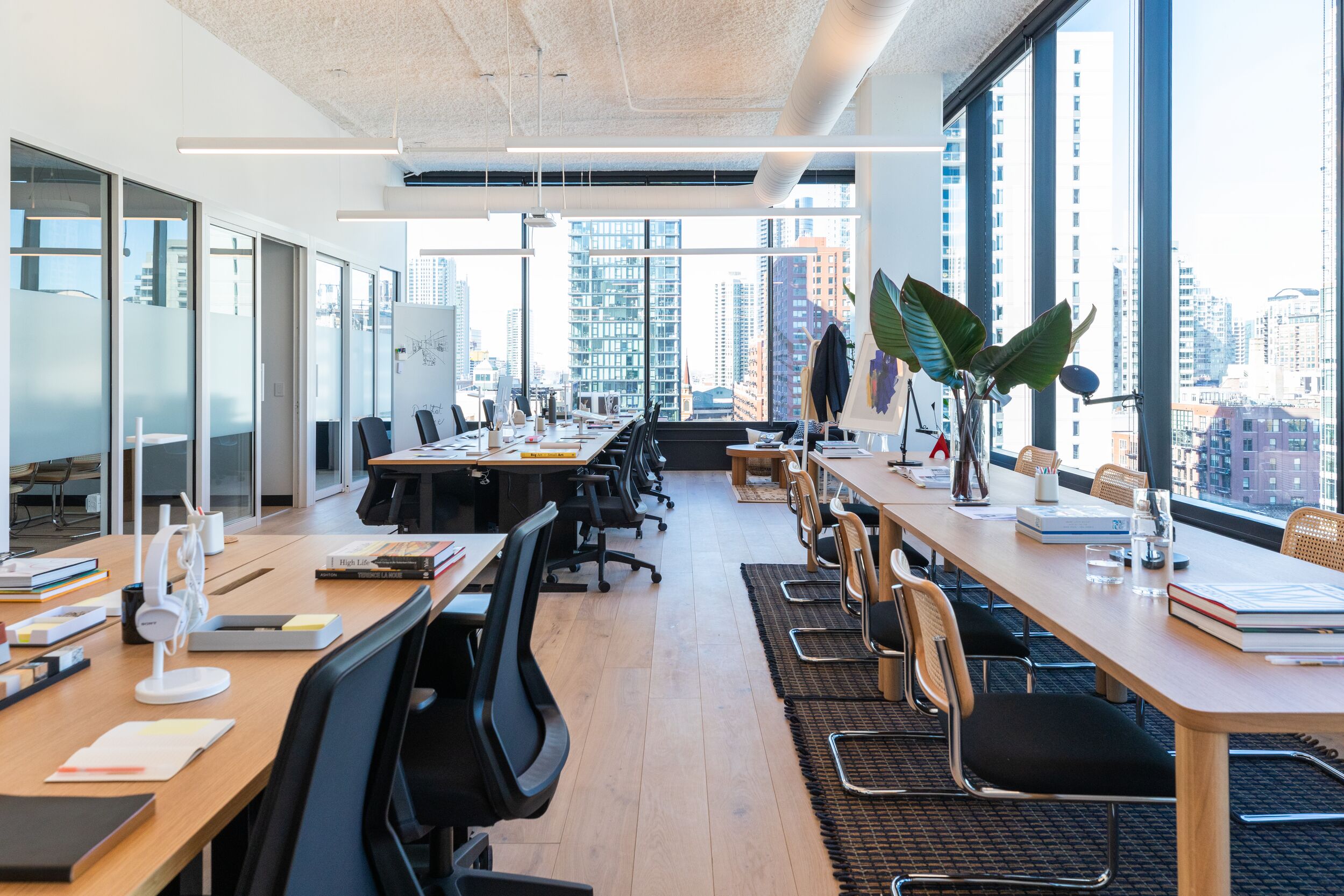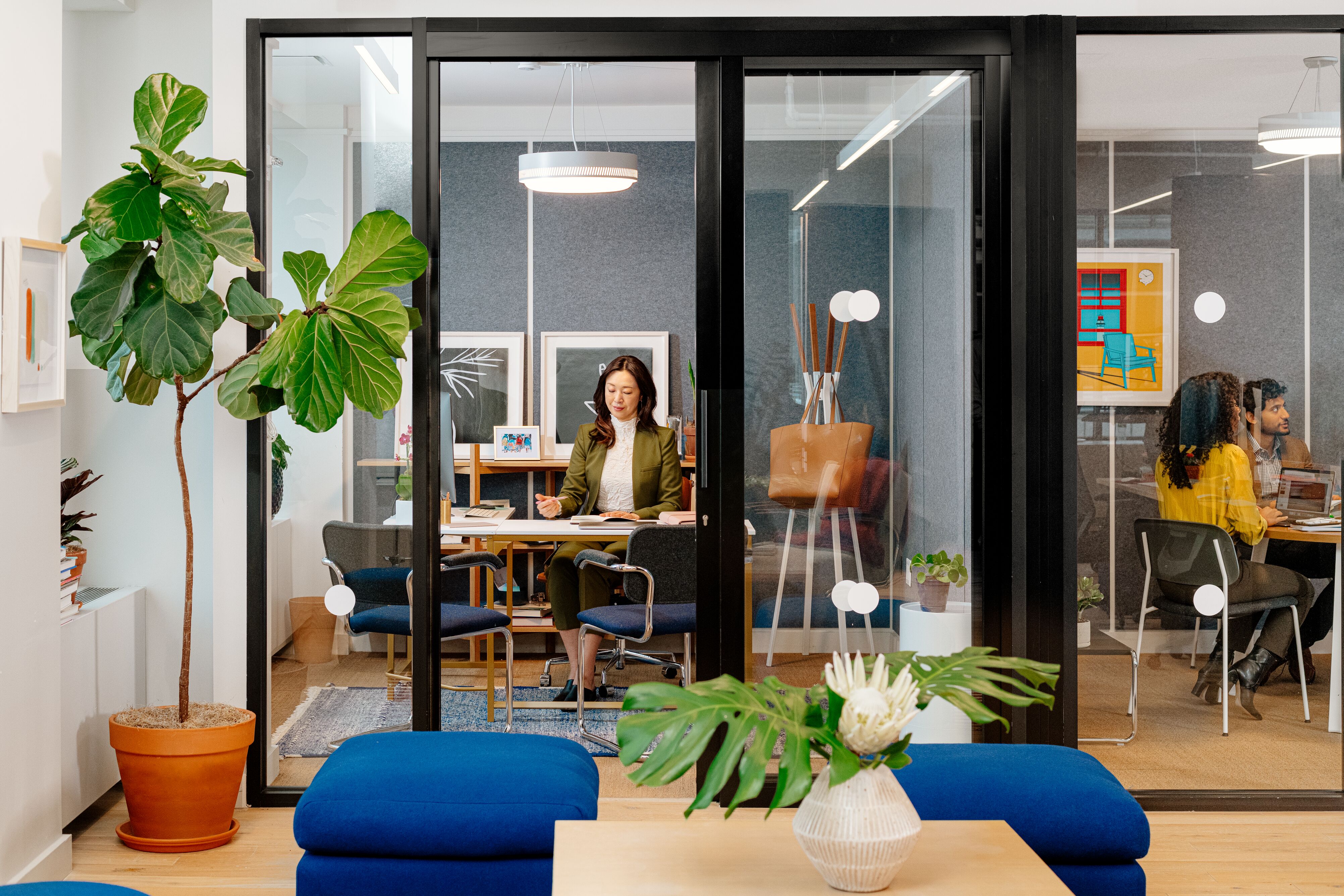This article originally appeared in Architects’ Journal.
There is no doubt that the COVID-19 pandemic has accelerated a seismic shift in the way the world works. While these past months have shown that working from home can be done, and that it has some advantages, it has also highlighted the office as a critical resource that enables human connection and interaction.
With persistent home working stifling innovation, employee expectations of the office are shifting. The workplace has been redefined as a hub for collaboration and productivity—and workspace design needs to evolve to support this change.
Pre-pandemic, office space capacity averaged around 60 percent—employees were with clients, traveling for business, or working from home a day or two a week. The pandemic has presented business leaders with a unique opportunity to think about office space in a new way; not just as a cost for housing employees but as a means of supporting specific business functions.
This has enabled a greater acceptance of exploring new things and getting to the crux of what actually works best for their businesses. Once companies return to work, they can leverage their workspaces better by using flexible spaces tailored to specific needs.
Workspaces that prioritize health and safety are now table stakes for every business. Optimized HVAC systems, enhanced cleaning, and modifications to enable social distancing have become a necessity for any company.
The office needs to be optimized for the work activities and social interaction that can’t happen at home.
Alongside this, the workforce will demand more flexibility, especially with respect to where, when, and how they work. So what will this mean for the office? For companies and employees alike, the office needs to be optimized for the work activities and social interaction that can’t happen at home.
This will look different for every business, so workspaces that are easily adapted through innovative, light-touch, and cost-effective design solutions offer a clear advantage.
We know from listening to feedback from our own members, which include some of the world’s largest enterprises, that spaces that support diverse working styles will be crucial. Some will prioritize workspace that cultivates active collaboration and brainstorming, which requires presentation space, soft seating, and breakout areas designed to spark conversation and ideas.
Others will require more space for heads-down, focused work for those employees who need to be able to concentrate free from distractions.
Well-designed workspaces need to strike this balance between focus and collaboration, and companies with easily reconfigurable space that can align with constantly evolving needs will be at an advantage. By breaking down square footage into percentages attributed to particular activities, we can model layouts according to how employees will really use the space and create collaboration hubs truly tailored to the future of work in existing office spaces.
A recent survey from IT service provider Atlas Cloud showed that fewer than half of office workers have exclusive access to a dedicated workspace at home, demonstrating the importance of the office being a place tailored to get the most out of the workday. An employee’s experience of their workspace goes beyond the time spent working. They should feel inspired the moment they walk through the door. With attention given to the small details—textures, lighting, artwork, accessibility—a simple journey such as getting a coffee or sitting down at a desk becomes an entirely different experience.
Workers should be able to count on intuitive, consistent, and familiar conditions that allow them to focus rather than fret over the basics. Meeting rooms need to serve a specific purpose, too. Conference rooms equipped with the latest AV technology and connectivity enable effective working in an increasingly remote world, while collaborative breakout rooms foster a more social feel through casual seating and interactive meeting tables.
An evolution in workspace design has begun, and now is the time for our industry to consider what businesses need to inspire their employees as they return to the workplace. As we reevaluate what employees really need, gone are the days of a traditional office with its “sea of desks.” As employees embrace new levels of flexibility accelerated by the pandemic, adopting a user-centric approach to workspace is the key to keeping them energized, engaged, and productive.
Jose Merino is the head of development, international, at WeWork, overseeing the development, construction, and project delivery of its workspaces across EMEA and the Pacific. He joined WeWork in June 2019, initially leading design and project management functions for LATAM. Merino is an industrial engineer by trade, with 25 years of experience in real estate, development, supply chain, logistics, asset management, and facility management, and has held senior positions at McDonald’s, IRSA, and Citibank over his career.
Rethinking your workspace?










